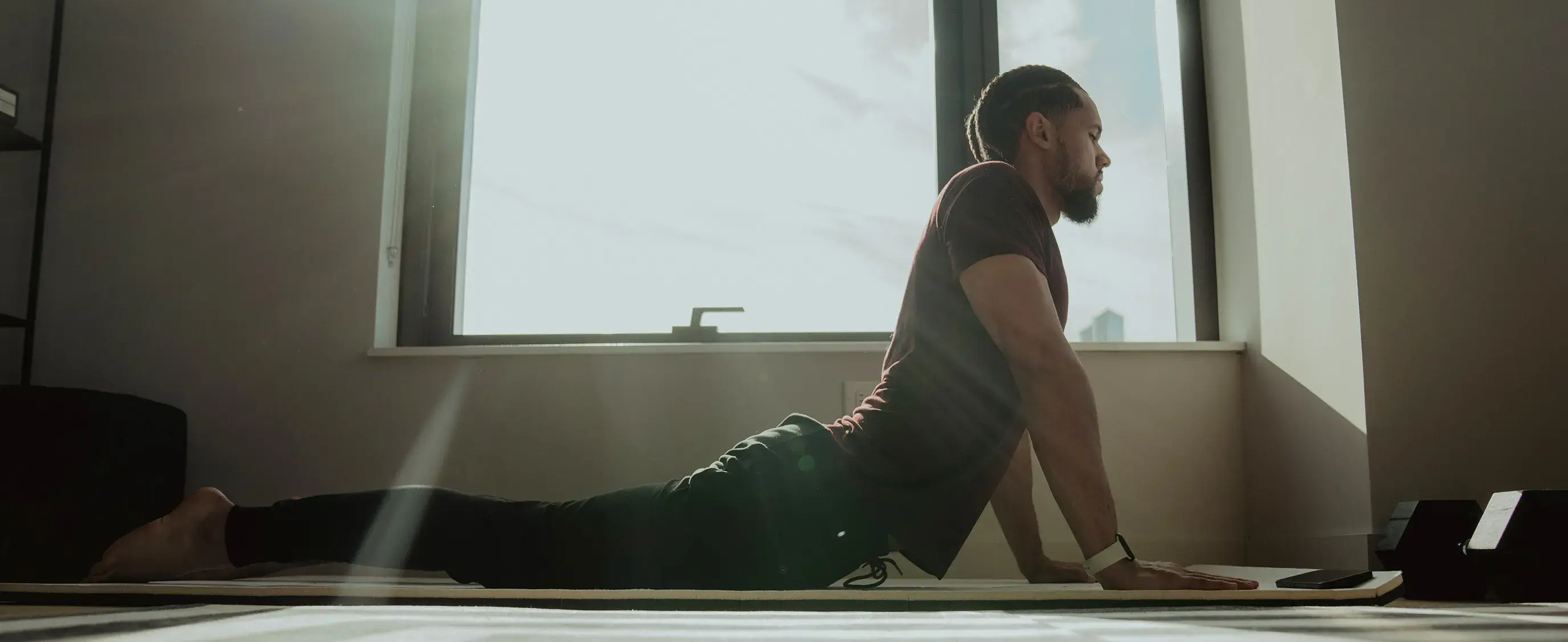After a heavy set, you feel a sharp ache in the lower back or tight hamstrings, and the bar suddenly feels risky. Sound familiar? Deadlift Back Pain matters in recovery because a poor hip hinge, weak core stability, or a stiff posterior chain can turn a training staple into persistent low back pain and limit your technique and strength. How to Recover Quickly From a Workout? This article provides clear, practical steps—mobility work, soft-tissue care, rehab exercises, and safer lifting mechanics—to fully recover from deadlift-related back pain and regain the confidence and strength to lift safely and perform at your best without fear of reinjury.
To help you do that, Pliability's mobility app guides you through simple mobility routines, targeted soft-tissue releases, and progressive strength drills that reduce inflammation, restore range of motion, and rebuild safe lifting mechanics so that you can return to heavy sets with confidence.
Summary
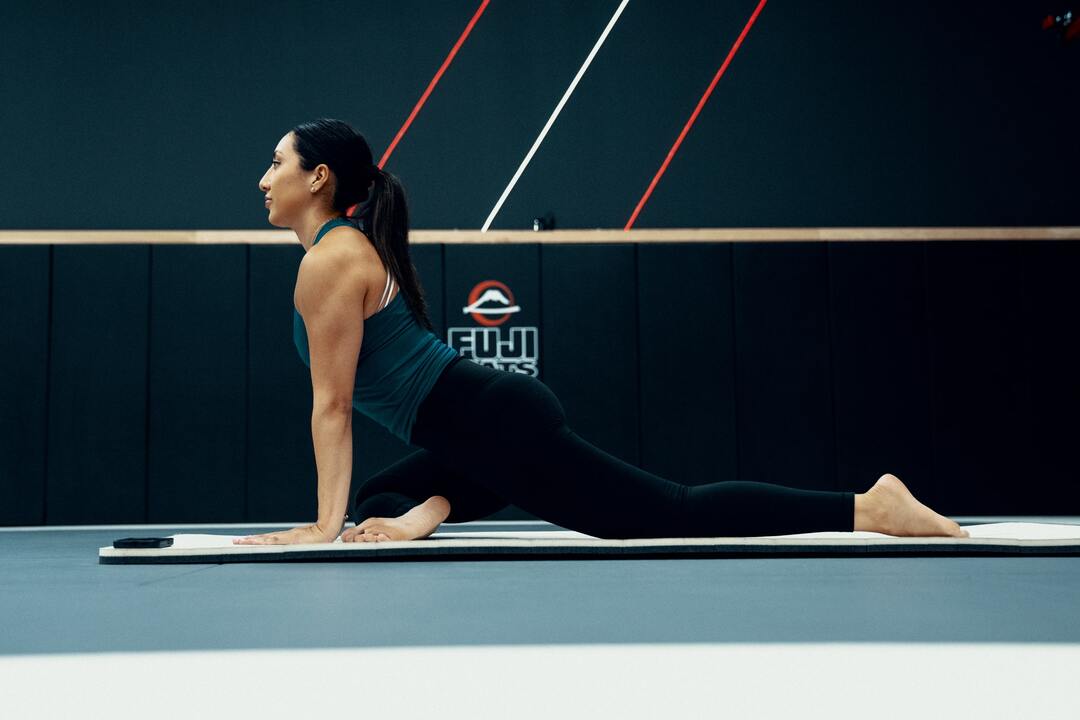
- Deadlift-related back pain often stems from mechanical overload and fatigue, with research showing deadlifting can increase spinal load by up to six times your body weight, which explains why a modest jump in load or late-set fatigue can suddenly cause injury. This is where Pliability fits in, with short guided routines and clear form cues to rebuild core stability and reduce technique breakdown during fatigue.
- Inadequate warm-up and chronic fatigue are major contributors, and deadlifts accounted for roughly 20% of gym-related lower back injuries in 2023, underscoring the need for targeted prehab and recovery rather than cavalier loading. Pliability addresses this by delivering targeted warm-ups and recovery protocols that can be slotted into training days.
- Weak or slow-firing glutes and hamstrings turn a hip-dominant hinge into a back-dominant pull, so conservative loading is advised; for example, start rehab lifts at 30% to 50% of your previous working deadlift and increase by 5% to 10% only when control and pain response remain stable. This is where Pliability fits in, by sequencing progressive drills and mobility work that focus on glute activation and motor control.
- Objective return-to-lift criteria matter more than subjective confidence, such as:
- A pain-free 10-rep hip hinge
- Single-leg bridge endurance equal or improved versus baseline
- A 3x5 set at 50% of your last heavy working weight with no pain increase within 24 hours.
Pliability addresses this by offering objective tracking and a body-scan feature to monitor pain ratings and movement endurance, such as during single-leg bridges.
- Safer deadlift alternatives and accessory choices reduce lumbar stress while preserving posterior strength, for example:
- Stopping Romanian deadlifts at mid-shin
- Favoring hip thrusts for high glute activation
- Using higher trap bar handles to shorten the range
- Prescribing kettlebell swings in 20 to 30 second sets for coordination and conditioning
This is where Pliability fits in, providing on-demand videos and progressions to select and scale safer deadlift alternatives during rehab.
What Causes Lower Back Pain After a Deadlift?
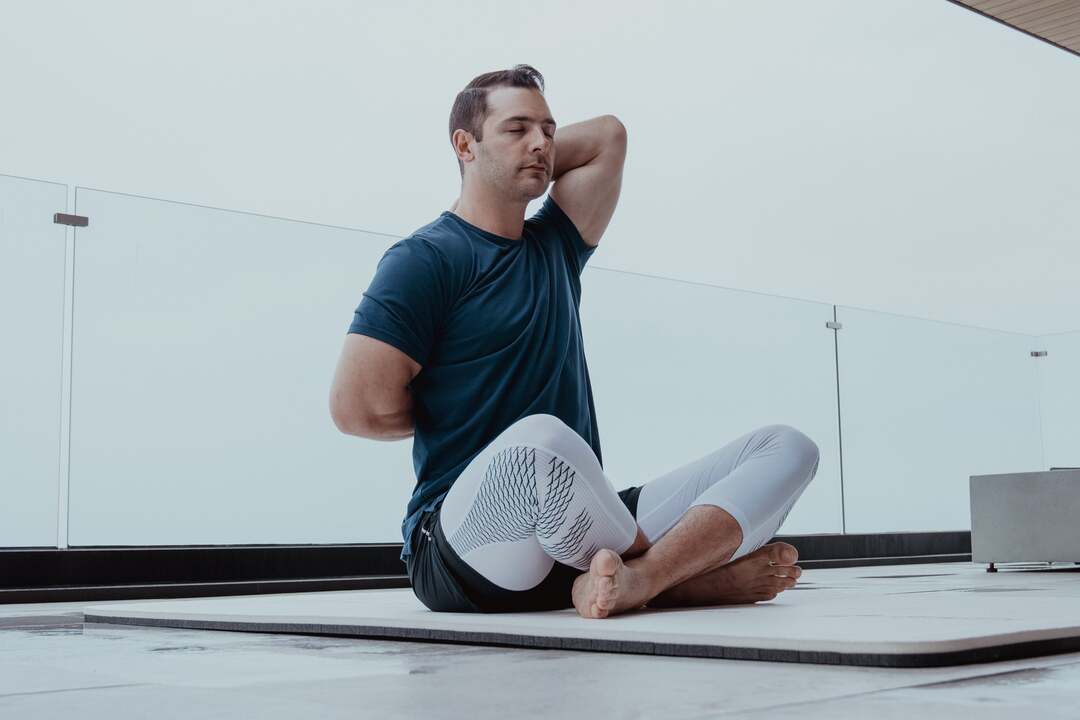
Lower back pain after deadlifts usually comes from a combination of mechanical overload and muscles not doing their job. When your hips, thoracic spine, and core fail to share the load, the lumbar erector spinae and passive spinal tissues pick up the slack, and this mismatch can lead to strain, irritation, or even a more serious injury.
What Actually Breaks Down When Your Back Rounds?
When the spine rounds, the load shifts from active muscles to passive structures. Your erector spinae must suddenly act like a rigid cable trying to hold a bent column upright, and the front of the spine sees increased disc pressure while the posterior ligaments get stretched. Think of the lumbar spine as a stack of coins; if the hinge at the hips is locked, the bottom coins get crushed instead of the door swinging smoothly.
The bending movement repeatedly multiplies stress in a way your muscles were not designed to absorb.
Why Does Heavy Weight Feel Fine One Set and Wreck Your Back the Next?
Two forces work against you: compressive load and fatigue. The barbell creates huge compressive forces in the lumbar vertebrae, and research shows deadlifting can increase spinal load by up to six times your body weight, which helps explain why even a modest jump in load can suddenly feel dangerous when your technique or stability slips.
As sets accumulate, slight deviations in posture become magnified. Fatigue weakens the stabilizers and allows the lower back to assume less favorable positions, where sprains or strains are most common.
How Do Weak Glutes or Hamstrings Change the Movement?
When the glutes or hamstrings are weak or slow to fire, the hips fail to drive the lift, and the lumbar extensors overwork to produce hip extension and control descent. That changes a hip-dominant hinge into a back-dominant pull, increasing the repetitive eccentric load on the erector spinae and increasing the risk of tissue overload.
Muscle imbalance is not just a strength problem; it is a movement-pattern problem. Your nervous system will recruit the nearest available muscle, even if it is less efficient, and that puts stress where it does not belong.
Can Limited Mobility and Poor Thoracic Extension Cause Lower Back Pain?
Yes. If your thoracic spine and shoulders lack extension, you lose the ability to keep the chest up during a hinge, and the lumbar spine flexes to compensate. Limited hip internal rotation or tight hamstrings narrow the hinge margin, forcing the lumbar segments into positions that increase shear and compressive forces.
These deficits are subtle; they do not always look like “bad form” on camera, but they alter the lift's geometry and concentrate stress on the lower back.
Does Warm-Up and Recovery Really Matter That Much?
They matter more than most lifters admit. Cold, stiff muscles change recruitment patterns, increasing the chance that the lower back will take on dynamic loads it cannot tolerate. In the same way a car engine snarls when cold, a body without a targeted warm-up will rely on reflexive tension rather than coordinated, economical movement.
Fatigue, Form, and Deadlift Injury
Overtraining compounds the problem because chronic fatigue reduces motor control, and when power fails, technique follows. That helps explain why deadlifts account for a large share of gym-related back trouble, with one assessment finding they make up 20% of gym-related lower back injuries in 2023, highlighting how standard load- and technique-related problems are in practice.
What Role Do Pre-Existing Spinal Conditions Play?
Conditions such as disc degeneration, prior herniations, or facet arthropathy alter the distribution of force across the lumbar segments. Even a small form error or a slightly heavier set can be the straw that breaks the camel’s back if an underlying pathology has already reduced tissue tolerance. Sharp, unilateral, or radiating pain requires evaluation because it may indicate nerve involvement rather than simple muscle soreness.
Why is the Difference Between Soreness and Injury So Hard to Judge?
Soreness from delayed onset muscle soreness is diffuse, symmetric, and improves with gentle movement. Injury pain is often focal, sharp, or follows a clear event or change in load. But the tricky part is that early tissue damage can feel like ordinary soreness until inflammation and guarding create a painful pattern. That is why watching for changes in gait, strength, or neurological signs matters more than simply waiting for pain to resolve on its own.
How Do These Factors Interact in a Typical Gym Scenario?
A single failure does not cause most incidents. An inadequate warm-up, a heavier-than-usual load, a fatigued nervous system, and a subtle mobility restriction converge, and the path of least resistance becomes the lumbar spine. I see the same script repeatedly:
- An athlete jumps loads too fast
- Technique frays late in a set
- The lower back ends up doing work it was never given priority to perform.
The pattern is predictable, and that predictability is precisely what lets us design better prevention strategies. That tight, uneasy feeling in your lower back after a session is a clue, not a verdict. But the real reason this keeps happening goes deeper than most people realize.
Related Reading
- Why is a Recovery Period Between Bouts of Exercise Important?
- Signs of Injury
- Hip and Knee Pain
- Why Do the Insides of My Legs Hurt When I Run
- Signs of Overtraining Cycling
- Deloading Week
- How Do You Know if You Tore Your ACL
- Injuries in Weightlifting
- How to Prevent MCL Injuries
How to Fix Deadlift Back Pain Fast and Lift Safely
.jpeg)
Start with quick pain control, then follow a staged, measurable plan to find and fix the movement fault before you add a heavy load again. Use immediate relief only to buy time for screening, progressive rehab drills, and a clear return-to-lift checklist that proves the problem is fixed, not masked.
What Do I Do Right Now to Calm Pain Without Losing Progress?
If pain is limiting movement, reduce activities that flare symptoms and use short-term measures to lower inflammation and pain so you can move. After that, test movement gently, not for strength but for control:
- A slow bodyweight hip hinge
- A prone leg raise to test nerve sensitivity
- A single-leg bridge for glute endurance
Track two objective numbers each day, such as a 0 to 10 pain rating and the number of unbroken single-leg bridges you can do, so you know if you are improving or stalling.
How Do I Screen for the Real Cause Before I Lift Heavy Again?
Do a focused movement screen that separates mobility limits from control deficits. Check hip internal rotation, thoracic extension with arm overhead, and single-leg balance while performing a shallow hinge.
If you lose spine position when you increase range or add arm movement, the issue is control, not raw strength. Add a neural tension check, like a straight leg raise, to rule out radicular signs. If any test produces sharp, shooting, or progressive numbness, arrange a clinical assessment immediately.
Which Rehab Drills Rebuild Missing Pieces Without Stressing the Spine?
Progress from low-load control to loaded stability. Start with anti-extension core holds that train the abs to resist back arching, such as timed hollow holds and Pallof presses. Add single-leg hinge patterns and slow, eccentric-focused Romanian deadlift variants using light weight to retrain hip mechanics.
Introduce thoracic mobility drills that combine rotation with scapular retraction to free the upper back, preventing the lumbar spine from compensating. Keep volume moderate, increase difficulty by adding time under tension or reduced stability, and avoid big jumps in load.
How Should I Program Progressive Loading to Avoid Re-Injury?
Use concrete metrics and phases, not guesswork.
- Phase 1, two to four weeks: Restore pain-free movement and endurance, three sessions per week, focusing on control drills and 8 to 12 minute walking or low-impact conditioning.
- Phase 2, two to six weeks: Build strength with higher-load but controlled lifts, twice weekly technical sessions, start at 30% to 50% of your previous working deadlift weight and increase by 5 to 10% only if you maintain control and experience no pain increase after 24 hours.
- Phase 3: Reintroduce heavier singles and closer-to-max work with longer rests and strict technique checks, but only after passing the return-to-lift tests below.
What Objective Tests Prove You Are Ready to Lift Heavy Again?
You should pass all of these before returning to near-max loads:
- Consistent, pain-free hip hinge pattern across 10 reps with no lumbar rounding
- Single-leg bridge endurance equal or improved versus baseline
- Ability to perform a 3x5 set at 50% of your last heavy working weight with no pain increase within 24 hours
- No new neurological signs and normal gait. If any test fails, regress a phase and prioritize the missing capacity.
Which Technique Drills Reduce the Chance of Repeating the Injury?
Use targeted variations to expose weak links without high risk. Perform the following:
- Paused deadlifts near the knee to lock in a neutral spine
- Tempo eccentrics to train descent control
- Rack pulls to overload the top phase while avoiding end-range shear at the low back.
Record video periodically and compare frames of your hip angle and spine alignment; minor, repeatable errors are what you need to fix before adding weight.
When Should I Seek Hands-On Care or Advanced Testing?
Refer urgently if you have progressive leg weakness, loss of bowel or bladder control, or worsening radicular pain. If symptoms are stable but not improving after one to two weeks of disciplined rehab, book a physical therapist who will measure strength, joint range, and motor control and create a staged plan.
Imaging may be helpful only when neurological signs are present or conservative care fails, so use it selectively.
How Do I Keep Fear from Derailing My Return?
Treat pain as data, not a verdict. Use small, measurable wins to rebuild confidence: a pain-free 10-rep hinge, then a 24-hour pain check, then a modest increase in load. Celebrate control before weight. The goal is durable capacity, so prioritize reproducible movement under load rather than proving you can lift a number.
Tech-Guided Return-to-Lift Plans
Many lifters find that guided telehealth programs and structured mobility apps help translate assessments into a day-by-day plan, delivering progressive drills, videos, and objective tracking so movement faults can be fixed before heavy loads return. Like tuning a high-performance bike, small alignment and control changes make the whole lift handle differently at speed, and that is precisely what a staged return-to-lift plan gives you.
What comes next will change how you replace the deadlift in your program while you rebuild capacity.
Related Reading
- How to Prevent Peroneal Tendonitis
- Why Do My Knees Hurt After Squats
- How to Prevent Arthritis in Hands
- How to Prevent Achilles Tear
- Ankle Sprain Prevention
- How to Prevent Knee Injuries
- Shoulder Impingement Exercises to Avoid
- Ankle Mobility for Runners
- How to Avoid Rotator Cuff Injury
Alternative Exercises to Deadlifts
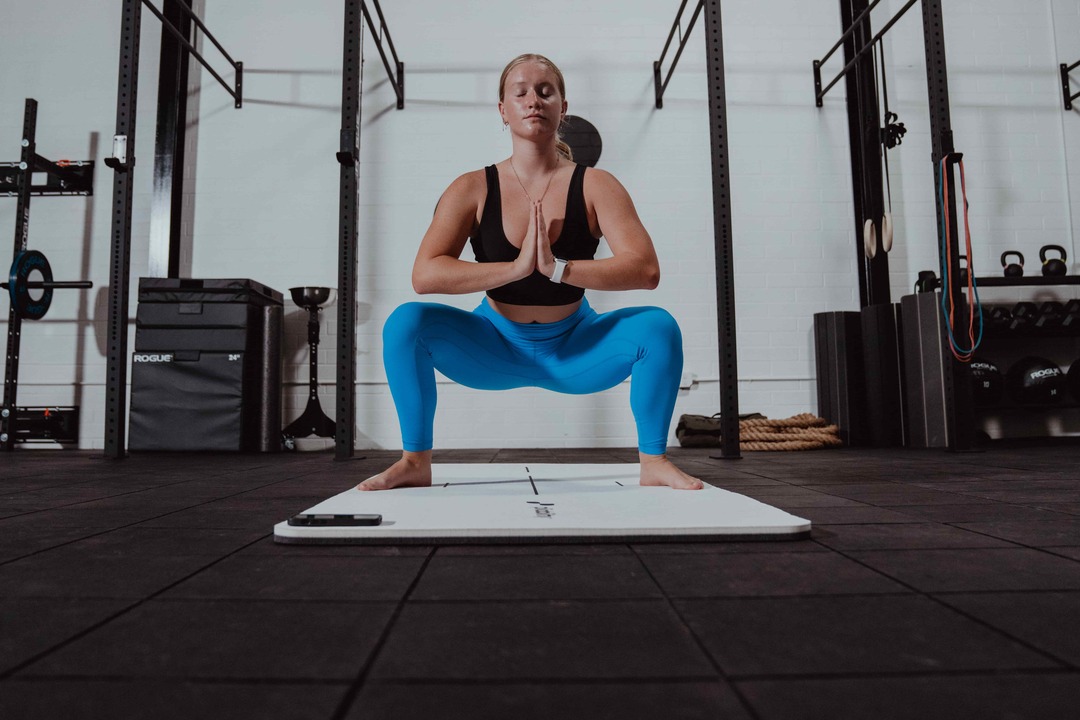
Pick variations that shift load away from the lumbar spine while still training hip extension and posterior chain strength; Romanian deadlifts, hip thrusts, trap bar deadlifts, and controlled kettlebell swings each do so in different ways, and with proper technique, they let you keep building capacity without provoking pain.
How Does the Romanian Deadlift Shift Stress from the Lower Back to the Hips?
Romanian deadlifts emphasize a controlled hip hinge and hamstring length, with less knee bend and a shorter range of motion than a conventional deadlift, so the work concentrates on the glutes and hamstrings rather than on extreme lumbar loading.
How to do it:
- Set up with the barbell at thigh height, feet hip-width, knees softly bent.
- Push your hips back while keeping the bar close to your legs, feel tension down the hamstrings, then return to standing by driving the hips forward.
- Keep the spine neutral, stop the descent where you can hold that neutral position, and use a slow 3 to 4 second eccentric to improve motor control.
Equipment notes: Use a mid-height rack or blocks to start if your hamstring mobility limits depth, and opt for moderate loads until the hinge feels crisp. Progress by increasing eccentric tempo or moving to single-leg RDLs; regress with dumbbell Romanian deadlifts or banded hip-hinge drills.
When Should You Pick Hip Thrusts to Protect Your Back While Still Loading the Glutes?
How to do it:
- Hip thrusts let the hips take nearly all of the extension work with minimal lumbar torque when you avoid overextension at the top.
- Sit with your upper back on a bench, feet under knees, barbell or dumbbell across the hips, then drive through the heels to lift the pelvis until the thighs and torso form a straight line.
- Cue a strong posterior pelvic drive rather than throwing the lower back into extension at lockout. Use padding under the bar for comfort and start with band-resisted or single-leg variations if you feel any lumbar strain.
- Aim for controlled sets of 6 to 12 reps to build strength and muscular size without forcing spinal loading patterns.
Why Choose a Trap Bar Deadlift Instead of a Straight-Bar Pull?
The trap bar repositions the load around your center of mass so you lift in a more upright posture, which lowers the bending moment through the lumbar spine and reduces the bar-to-body lever arm that magnifies torque.
How to do it:
- Stand centered in the frame with feet under the handles, push the hips back, keep the chest up, and drive through the heels to stand.
- Use the neutral grip handles to keep the bar path vertical and avoid excessive forward bar drift. Handle height matters; choose high or low handles depending on mobility, and favor straps only when grip, not technique, limits work.
- Consider a trap bar for heavier sets that you cannot tolerate with a conventional barbell.
Can Kettlebell Swings Build Power Without Flaring Back Pain?
Yes, when you treat the swing as a ballistic hip hinge rather than a back lift, start with a light kettlebell.
How to do it:
- Brace lightly, hinge at the hips, load the hamstrings, then snap the hips forward to send the bell to chest or eye level, letting momentum carry it on the downswing.
- Keep the spine neutral, let the shoulders float, and use short sets of high-quality reps rather than long, grinding sets.
Russian swings are preferable to overhead swings because they maintain a shorter, safer arc. If you feel the lower back doing the work, drop the weight and fix the hinge pattern with mini hinge drills and kettlebell deadlifts first.
What Programming and Load Cues Help You Progress Without Aggravation?
Treat these variations as purpose-built tools, not cheap substitutes for heavy conventional lifts. Mix 2 to 3 sessions weekly, with one day focusing on heavy, controlled hinge work such as trap bar or RDLs for 3 to 5 sets of 3 to 8 reps, and another day emphasizing hip-dominant volume with hip thrusts or single-leg work for 3 to 5 sets of 6 to 12 reps.
Keep intensity honest; choose loads that allow you to preserve crisp technique and recover within 48 hours. Use tempo to target weaknesses for example, slow eccentrics on RDLs or short isometric holds at the top of hip thrusts to improve motor control without adding spinal load.
Which Common Technical Mistakes Increase Back Risk Even with Safer Exercises?
Losing the hinge and trying to "pull" with the lower back, letting the bar drift forward, and forcing excessive range beyond your mobility are the usual culprits. Watch for tucking the chin and creating a C-shaped spine in the bottom position, and for hyperextending the lumbar spine on hip thrust lockout.
Video a few reps at training weight, because a neutral spine looks different under load than in a mirror. When in doubt, reduce the range or load and deliberately build movement quality.
How Do You Regress and Return to More Conventional Deadlifts Later?
Use stepwise regressions like banded hinges, RDLs to a low box, kettlebell deadlifts, then trap bar work before attempting conventional deadlifts again. Add small increments in volume and intensity only after several sessions without baseline pain increase, and prioritize single-leg and anti-rotation work to expose and fix side-to-side imbalances before reintroducing heavy symmetrical loads.
Apps for Corrective Movement Sequencing
Many lifters find that platforms and mobility apps help them sequence these corrective variations into daily routines, track pain and progress, and deliver targeted drills that make technical practice productive rather than random.
Think of it like swapping a heavy suitcase from your back to a rolling cart, then training the cart so you can safely carry heavier loads; what you practice now shapes how your spine reacts later. That next piece raises a question you will want answered quickly.
Improve Your Flexibility with Our Mobility App Today | Get 7 Days for Free on Any Platform
If you’re feeling limited by pain or stiffness and want a practical path back to dependable movement, consider Pliability. This athlete-focused mobility app pairs an extensive library of high-quality videos with daily-customized programs and a body scan to show where you actually lose range.
I’ve seen lifters use its progressive sessions to slot rehab into real training, and you can try a seven-day free trial on iPhone, iPad, Android, or the web to see if it helps reduce pain and restore motion.
Related Reading
- Glute Activation Exercises
- Eccentric Quadriceps Exercises
- How to Squat Without Knee Pain
- Injury Prevention for Runners
- How to Start Working Out Again After Knee Injury
- Signs of Overtraining Running
- Scapular Mobility Exercises
- SI Joint Mobility Exercises
- Running Injury Prevention Exercises
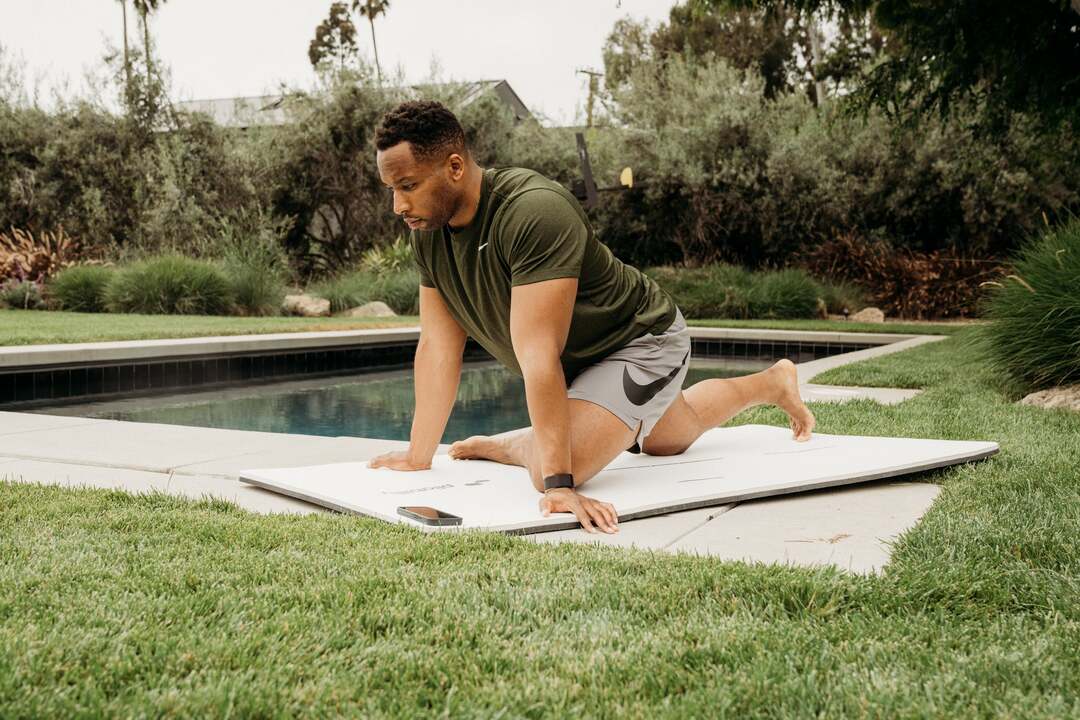
.jpg)

.jpg)
.jpg)
.jpg)
